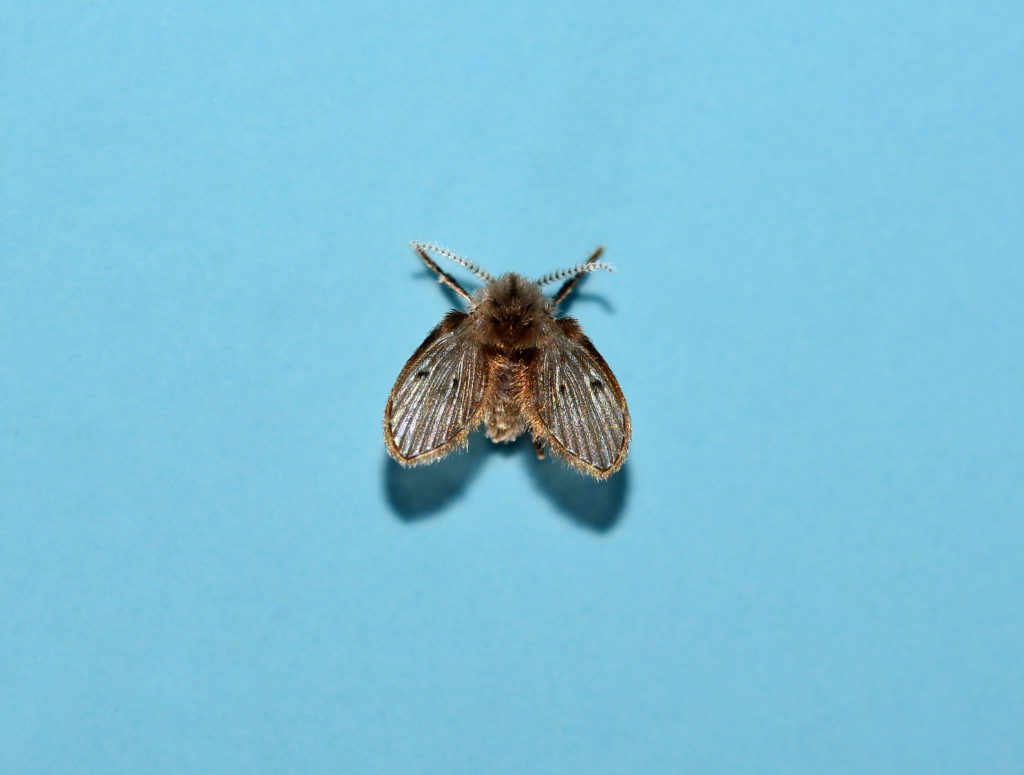As I wander into the bathroom to begin the last empty before my surgery is about to begin, I see something flutter out of the corner of my eye. Was that a moth or a fly? It was definitely small. I saw it flutter like a moth. It also seems like a small fly. I catch another glance and see it more clearly, but the question remains…for most: is this a moth or fly?
Hybrid Insects
Are there such things as hybrid insects? I remember one representative I had who was sure that all sorts of arthropods were constantly cross-breeding, mutating, and even morphing into new species. Sorry buddy, this just isn’t how evolution works. Sure there are things like mules in the animal kingdom, but this is not a regular occurrence. Insects aren’t into creative trading like we are with dogs. The only common hybrid element of the arthropod world is in our naming of them. We do this when one looks like another typically resulting in a name stating what it looks like and what it really is such as:
-Spider beetle (is a beetle, but looks like a spider…kind of…)
-Ant Spider (is a spider, but looks like an ant…so it can sneak in and eat ants straight out of their home!)
-Moth Fly (you had to see this one coming)

What Is a Moth Fly?
A moth fly is a true fly (psychodidae) that looks like a moth. They are quite small and are known by several other names such as:
- -drain flies
- -filter flies
- -sink flies
- -sewer gnats
They have rather hairy bodies which have the appearance of fur. This lends itself when combined with the broad wing style with markings on it to appear much like a moth.
Wait…Sewer Gnat?! Gross!
Yeah, you got that right. You nailed exactly why my brain latched on to this little guy fluttering around the room next to where they are about to chop me open. The big question is, should I be concerned?
There are definitely two sides to the coin on answering this question. Anytime I see a pest that is related to filth, I become a little concerned. That being said, moth flies are extremely common in facilities that are constantly damp such as
- hospital restrooms
- gym shower facilities
- public pool showers and bathrooms
They can develop quickly and are quite challenging to keep away.
How To Get Rid of Moth Flies
Moth fly larvae love to pop up in sludge-based environments that give them delicious bacteria to feed on. This is most common in drains or even between tile where such environments can develop. The best thing to do is to control that environment. This can be done by regularly cleaning the drains, especially with a bioagent. It is particularly helpful to choose a product with a foaming agent so it hits all the areas where bacteria could be hanging out. Recommended frequency is going to vary greatly from situation to situation.
Help for a Moth or Fly or Anything Else
The world of insects, arachnids, and everything else tiny and annoying can be too complex for most businesses and people to worry about. You can spend as much time trying to identify something as Rove’s pest professionals would take to get a solid solution in place. Stop worrying about controlling your own pests, turn it over to Rove, and get back to your expertise….like chopping me open without a moth fly landing in my bowels!
